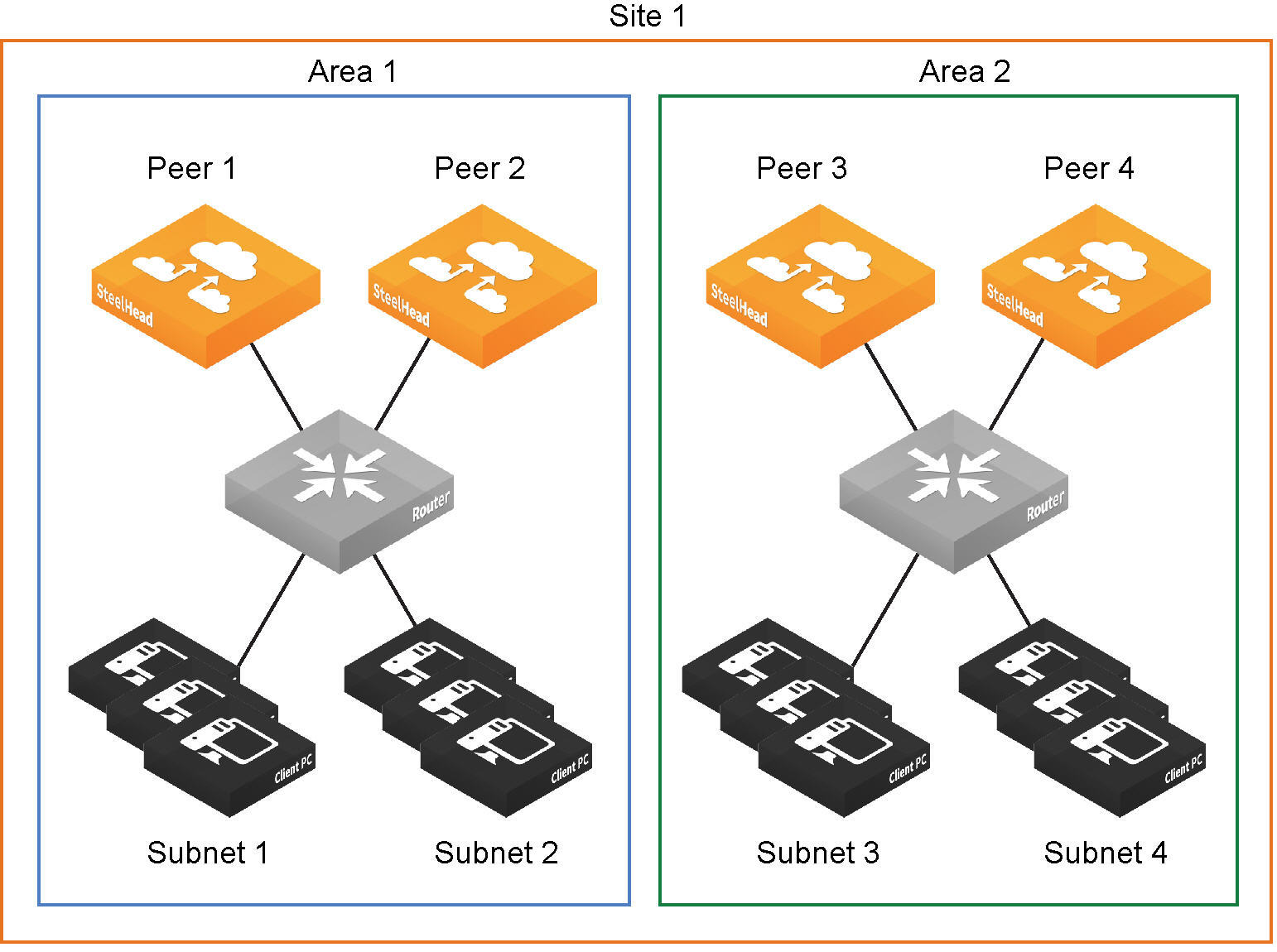About sites, networks, and uplinks
By configuring topologies, you provide your local appliance with the information it needs to connect to wider networks. You can create multiple topologies by saving different setting values to different appliance configurations. For example, you might enter setting values specific to an MPLS network, and then save them to an appliance configuration named “MPLS”. Later, you might enter setting values specific to connecting to a cloud network, and then save them to a “Cloud” configuration. You can switch between the appliance’s running configuration to a different one in the administration section of the Management Console.
Configurations are shareable across appliances. Peered appliances sharing topology information among each other use this information to determine possible remote paths for path selection and precompute the estimated end-to-end bandwidth for QoS, based on remote uplinks.
Use topologies as building blocks to simplify configuration for path selection and QoS. They provide to appliances the network point-of-view to all sites, including each site’s networks and uplinks.
Topology overview

Networks define the carrier-provided WAN connections: MPLS, VSAT, or internet.
Sites define the discrete physical locations on the network. A site can be a single floor of an office building, a manufacturing facility, or a data center. Sites can be linked to one or more networks. The local sites use the WAN in the network definition to connect to the other sites. The default site is a catch-all site that is the only site needed to backhaul traffic. Use sites with path selection, QoS, and secure transport features.
Areas are useful in cases where peered appliances connect to subnets within a network that don’t communicate with each other. Use the command-line interface to configure areas.
Site definition divided into areas

Uplinks define the last network segment connecting their local site to a network. You define carrier-assigned characteristics, such as upload and download bandwidth and latency, to an uplink. Uplinks must be directly (L2) reachable by at least one appliance in the local network. They don’t need to be physically in-path. Path selection uses local uplinks.



